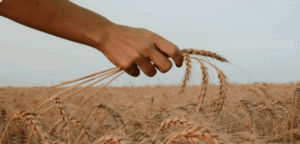Friday, 3 October 2025
Australian scientists creating ‘digital twins’ of mango to boost food production.
University of Queensland scientists are creating ‘digital twins’ of mango and macadamia orchards to help boost food production. Using technology familiar to computer gamers, University of Queensland scientists are creating…

University of Queensland scientists are creating ‘digital twins’ of mango and macadamia orchards to help boost food production.
Using technology familiar to computer gamers, University of Queensland scientists are creating ‘digital twins’ of mango and macadamia orchards to help boost food production.
Professor Neena Mitter, the Director of the Centre of Horticultural Science at Queensland Alliance for Agriculture and Food Innovation (QAAFI), said it was an example of how computers were changing the industry.
“Developing a digital model for an orchard with slow growing crops like mango and macadamia enables us to run virtual experiments at a scale and speed never before possible,” Professor Mitter said.
“Digital technologies offer an unprecedented acceleration in innovation that will help make food production more productive, resilient, and sustainable.”Lead researcher Dr Liqi Han said the technology would particularly benefit slow growing crops like fruit trees. “The digital modelling provides untapped opportunities for users to rapidly trial new ideas and acquire a reliable indicator of how to best optimise production systems,” Dr Han said.
We call this technology ‘DigiHort’, short for Digital Horticulture.”
The computer simulations can be a conceptual design of an orchard that doesn’t yet exist, a digital twin or detailed replica of an existing orchard, or a digital variant, where changes are made to a digital twin.“All three forms can be integrated with environmental and management simulators,” Dr Han said.
“For example, this might include sunlight and chemical spray simulations to allow for evaluation and optimisation of orchard management practice.”Virtual trials start with the design, with software users able to decide where in a landscape to plant trees, the density of the canopies and the configuration of the rows.
Users then consider how the trees are maintained, wielding virtual pruners and testing the impact of different – and even unconventional – tree training systems.This innovation is based on new LiDAR scanning technology applications undertaken with industry partner, Riegl Australia, and state government research stations in Queensland, Western Australia and Northern Territory.
It relies on High Performance Computing (HPC), which allows Dr Han to run extremely fast virtual experiments without loss of accuracy.“These days, we talk more and more about precision agriculture,” Dr Han said.“We enhance precision by looking at the details, such as how much light can be captured by each leaf or fruit, or the distribution of sprayed chemicals across the canopy.
Technology
Arya.ag wins SmartAG Award 2025 for climate-resilient farming solutions
Oct 01, 2025 | Awards
Ecolab launches Ecolab CIP IQ
Sep 30, 2025 | Company News
Recur Software expands into food processing with acquisition of Innova Zones
Sep 30, 2025 | Company News
Food Testing
Arya.ag wins SmartAG Award 2025 for climate-resilient farming solutions
Oct 01, 2025 | Awards
Reducing Testing Time from 15 Days to 72 Hours: bioMérieux Leads the Way
Sep 19, 2025 | Food Safety and Testing
MycoTWIN boosts Türkiye’s Mycotoxin research with EU support
Sep 17, 2025 | Europe
More Popular
Palsgaard names Miguel Hidalgo as CEO
Oct 01, 2025 | Company News
Starbucks India introduces first coffee experiential store in Chennai
Oct 01, 2025 | Beverages
Arya.ag wins SmartAG Award 2025 for climate-resilient farming solutions
Oct 01, 2025 | Awards





